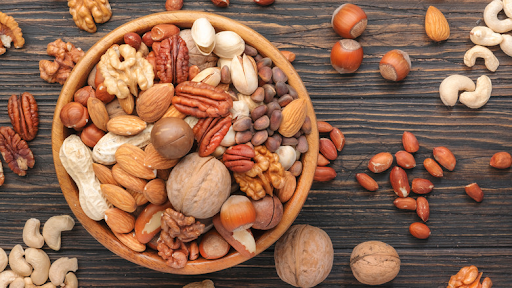10 Best Foods To Eat During Winter in 2025
Our bodies instinctually need generous, fulfilling dishes and encouraging feasts that keep us feeling sustained and fulfilled when the weather conditions turns cold. The best winter food sources will generally be good suppers that give a lot of warmth and flavor through unobtrusive zest, rich flavors, and filling fixings.
1. Salad greens
Salad greens in winter? Definitely. Frozen spinach and kale are all around as great as new. They're super wellsprings of L-ascorbic acid, a resistant framework sponsor; vitamin K, which helps blood coagulating; and, vitamin A, significant for vision. Obviously, you'll eat them warm!
Menu thought: Pan-sears are normal vehicles for spinach, kale, and arugula. You can likewise add your veggie to smoothies.
2. Root vegetables
Root vegetables like beets, carrots, and turnips are ample throughout the cold weather months and loaded with fundamental supplements, including beta-carotene, and nutrients C and A, which give your resistant framework the lift it necessities to safeguard you from colds and influenza.
Menu thought: With olive oil, delicately coat cut root vegetables and dish them gradually in a 350-degree broiler until their regular sugars caramelize.
3. Citrus natural products
L-ascorbic acid lifts both your invulnerable framework and your temperament. Conventional sources incorporate citrus organic products, similar to oranges, grapefruit, and lemons. Strawberries, mangoes, and kiwis are likewise high in L-ascorbic acid.
Menu thought: Add L-ascorbic acid rich broccoli, cauliflower, and ringer peppers to any dish. In the event that you can't find them new, then, at that point, get them frozen.
4. Vitamin D-rich food varieties
Vitamin D-rich food varieties are fundamental during the dim cold weather months. Salmon is an extraordinary wellspring of vitamin D, as are egg yolks, braced cereals, milk, red meat, and shitake mushrooms.
Menu thought: Rub a little olive oil on a salmon filet, and sprinkle finely minced ginger root on top prior to baking at 350 degrees.
5. Beans
Beans like chickpeas (known as garbanzo beans) are brimming with protein and contain practically the fundamental amino acids in general.
Menu thought: Add dried or canned beans to soups or mixed greens, or mix them with additional virgin olive oil, lemon juice, tahini, and salt to make your own hummus.
6. Low-sodium soup
Soup is an ideal winter food, for however long it's natively constructed or low sodium. Low-sodium soups contain 140 milligrams or less of sodium per serving. "Diminished" sodium implies that just 25% of a soup's sodium has been eliminated. Avoid recipes that call for cream, meat, and salt, and utilize those that utilization chicken stock, vegetable stock or water as the base and call for loads of vegetables.
Menu thought: Add canned or dried beans or lentils to your soup for additional sans fat protein and fiber. Beans check your craving by dialing back assimilation and controlling blood sugars, which can assist with controlling yearning and reinforce temperament.
7. Entire grains
Quinoa and other entire grains like cereal, farro, bulgur, and buckwheat give protein and fiber. Cereal makes a decent winter breakfast or bite. It's high in zinc, which your resistant framework needs to work appropriately, and dissolvable fiber, which reinforces heart wellbeing.
Menu thought: Add cooked entire grains to your serving of mixed greens to keep you more full longer, and purchase entire grain breads, saltines, and cereals. Add cinnamon, cardamom, or nutmeg to your cereal, which will upgrade its flavor without adding calories, fat, sugar, or salt.
Paninis and melts are fulfilling on chilly days and sound as long as you keep away from breads with immersed fat and sodium. Go with entire grain assortments, which list "entire grain" as the main fixing on the bundle.
8. Berries
Strawberries, blueberries, blackberries, and raspberries are high in fiber and cell reinforcements, plentiful in L-ascorbic acid, manganese, and nutrient K1.
Menu thought: Appreciate berries as a tidbit or on top of yogurt and cereal for breakfast.
9. Greek yogurt
Greek yogurt, contrasted with different yogurts, has a higher protein content and is an extraordinary wellspring of vitamin B-12, calcium, and probiotics, which keep your stomach microbiome in balance. Stay away from low-fat, "Greek-style" and seasoned yogurts.
Menu thought: Improve your Greek yogurt with banana or berries, or add it your blender with just the right amount of milk, new natural product, and squashed ice for a smoothie.
10. Nuts
Nuts like almonds, pecans, cashews, and pistachios are high in cell reinforcements and minor elements. Make a point to purchase crude, unsalted, or low-salt choices rather than nuts that are sweetened, salted, or remembered for trail blend.
Menu thought: Gently coat pecans or different nuts, as well as yams, beets, or chickpeas with olive oil and dish them in a 350-degree stove and appreciate them for eating.


















Comments
Post a Comment